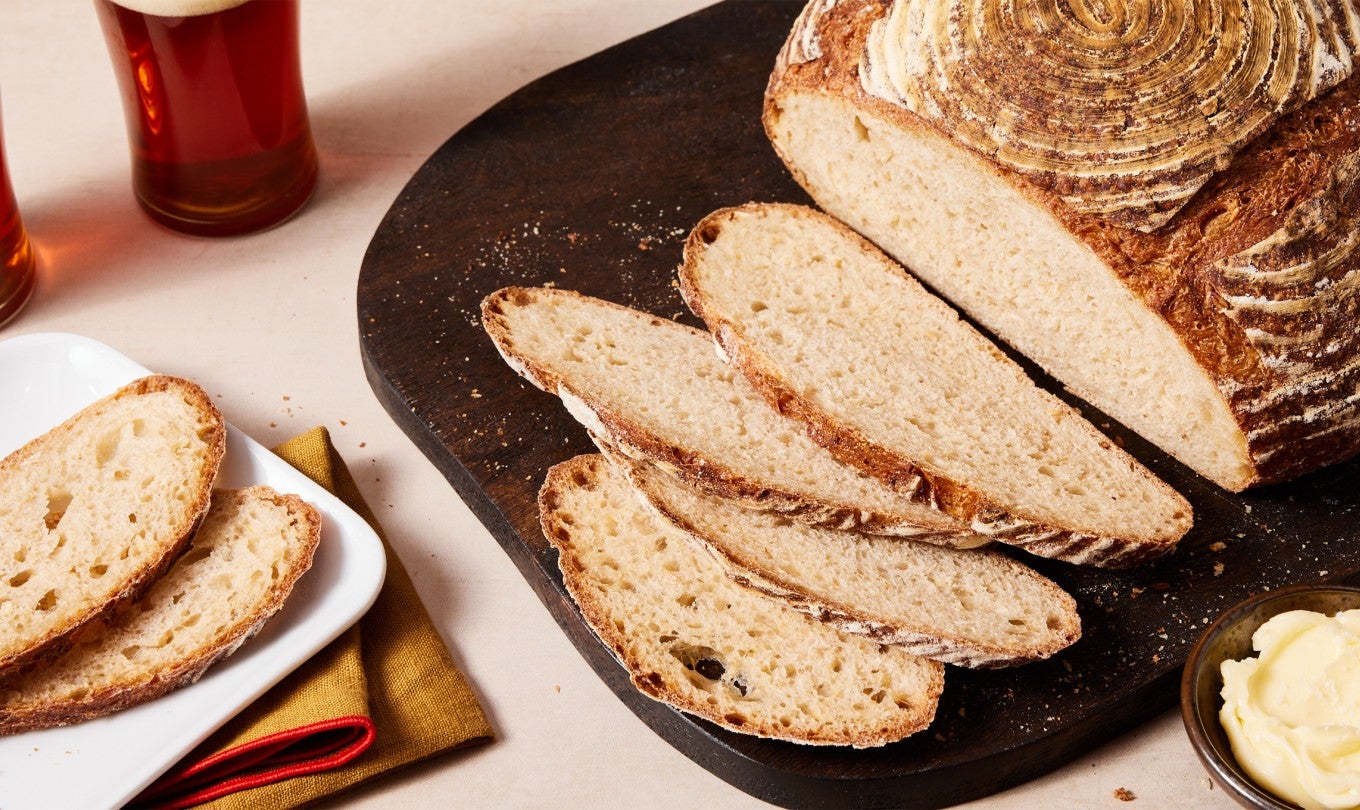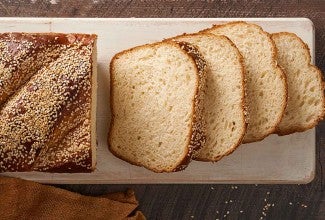-
To make the soaker: Put the wheat flakes or oats in a heatproof bowl, and pour the boiling water over them, stirring to combine. Allow to cool while you start to prepare the dough.
-
If you're measuring your sourdough starter using volume rather than weight, stir it down before measuring. Weigh your flour; or measure it by gently spooning it into a cup, then sweeping off any excess.
-
Combine the starter, beer, flour, and yeast in a large bowl and mix well – by hand or mixer – until all the flour is moistened, and the dough has formed a cohesive, somewhat sticky mass, about 3 minutes on low speed of a stand mixer.
-
Cover the dough and let it rest (autolyse) for 30 minutes.
-
After the rest, mix the soaker, honey, and salt into the dough until evenly incorporated, about 1 minute on low speed of a stand mixer. Turn the mixer up one speed and knead the dough until it’s smooth and supple though still somewhat soft and tacky, about 2 to 3 minutes. When fully kneaded, cover the dough and let it rise for 1 hour.
-
Turn the dough out onto a floured surface and fold it over itself several times, stretching it gently in the process. Return the dough to the bowl, cover it again, and let it rise for another hour.
-
Repeat the stretching/folding process one more time, then return the dough to the bowl to rise for a third and final hour.
-
At the end of the rise, turn the dough out onto a lightly floured surface and gently shape it into a round. Place the dough on a floured surface, cover it with lightly greased plastic wrap and let it rest for 20 minutes.
-
After this rest, shape the dough into a tight round, and place it seam-side up in a bowl lined with floured cloth, or a floured brotform or proofing basket. Cover and let rise/proof for 2 1/2 to 3 hours in a warm place (or up to 4 hours if your house or kitchen is cool), until it’s puffy and jiggles in the bowl when you shake it gently.
-
About 1 hour before the bread is ready to bake, preheat the oven with a baking stone in it (if you have a stone) to 450°F. For the best crust, place an empty cast iron frying pan on the oven rack below the stone to preheat.
-
When the loaf has risen, gently turn it out of the bowl or brotform onto parchment. Slash the loaf several times with a sharp knife or lame and slide the parchment directly onto the stone in the oven. If you’re not using a stone, turn the loaf out onto a parchment-lined (or lightly greased) baking sheet, slash it, and place the baking sheet in the oven.
-
Pour 1 cup of boiling water into the cast iron frying pan. Be sure to wear good oven mitts to prevent steam burns.
-
Bake the bread for 15 minutes at 450°F, reduce the oven temperature to 400°F, and bake for another 25 to 30 minutes, until the loaf is crusty and a deep mahogany brown. Remove the loaf from the oven and cool completely before slicing.
-
Storage information: Store leftover bread in a paper bag or loosely covered in plastic for a few days at room temperature; wrap and freeze for longer storage. Slicing the loaf before freezing it is a convenient way to have single servings readily available.















